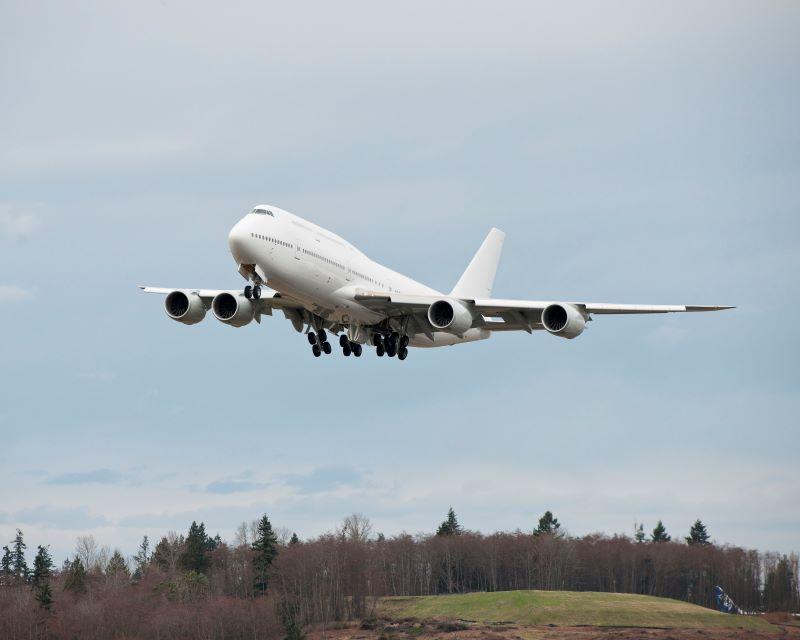
Undetected degradation of key lightning protection system parts prompted Boeing to recommend prompt inspections on all 747s, and the FAA is mandating the work for U.S.-registered aircraft.
Boeing uses several layers of protection to ensure feed tubes that run into fuel tanks do not become ignition sources when lightning strikes engine nacelles. Among them is a bonding jumper, or cable, outside the fuel tank and sealant over the fuel tank’s interior wall.
These serve as secondary protection beyond the primary electrical path, which are wing spar fittings. Fittings are subject to degradation that can limit their lighnting protection effectiveness, however, making the secondary protection critical.
Boeing recently discovered 747 jumpers are failing “at an excessive rate,” an FAA airworthiness directive (AD) set for publication Nov. 30 reveals. Boeing also found another latent failure: “a complete crack around the circumference of the fuel feed fitting encapsulation inside” one 747-8 fuel tank.
“This encapsulation is designed to isolate any sparks/arcing generated during a lightning strike because of failed electrical bonds from flammable fuel vapors in the tank,” the agency said.
“This is an urgent safety issue, as all fuel feed lightning protection features now have evidence of compromise.” The issue affects all 747 variants, the agency determined.
The FAA directive, which was not subject to a pre-publication public comment period due to the issue’s severity, orders 747 operators to conduct inspections within 90 days of its effective date, expected to be Dec. 15. All other variants must be checked within 120 days of that date. Repetitive inspections must be done every 12 months.
The directive applies to 211 U.S.-registered aircraft but is likely to be adopted globally. Aviation Week Network Fleet Discovery database shows 402 747s in service globally plus another 56 in storage. Fewer than 100 of the in-service models carry passengers.
Boeing issued operators’ messages detailing the issue and recommended inspections in mid-November. The FAA directive is based on Boeing’s instructions.
Specific actions include inspecting the jumpers for damage and measuring their electrical bonding resistance. Operators also must report all results to Boeing.
“The inspection reports ... will enable the manufacturer to obtain better insight into the nature, cause, and extent of the bonding degradation and failures, and eventually to develop final action to address the unsafe condition,” the FAA said.
